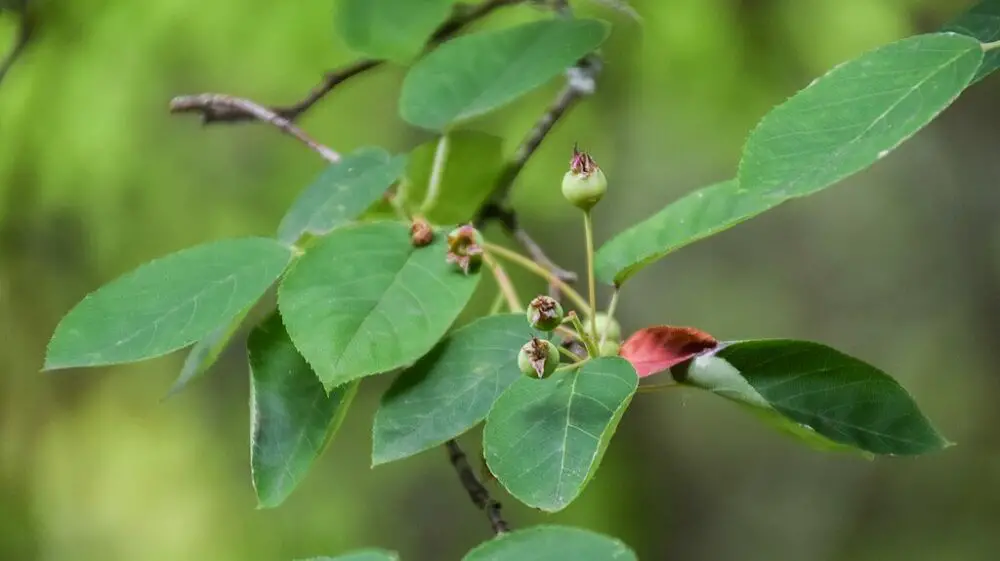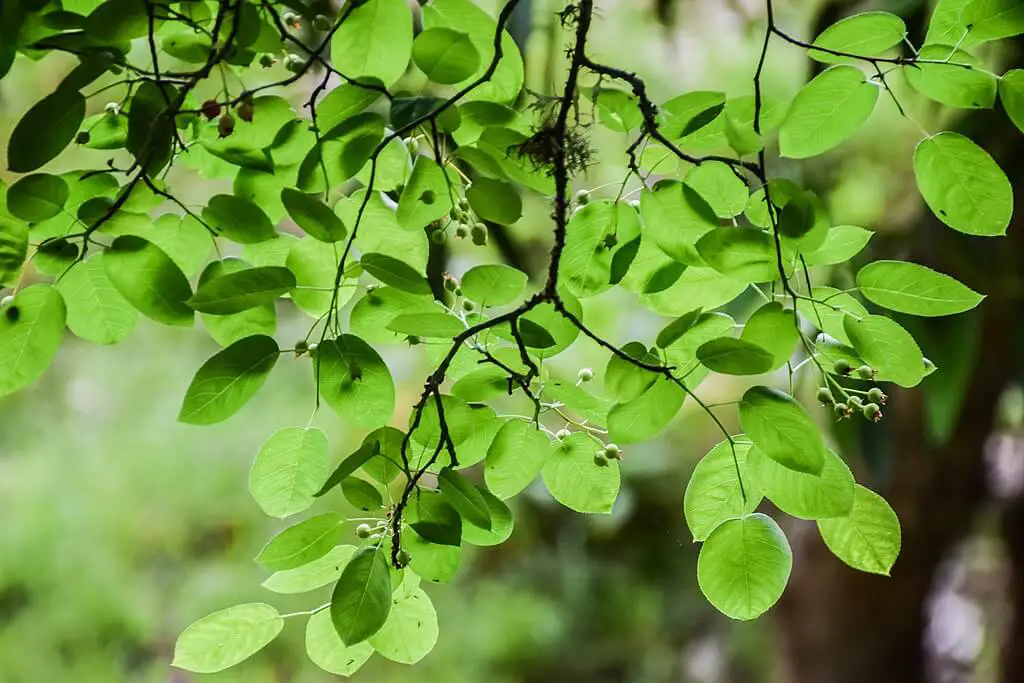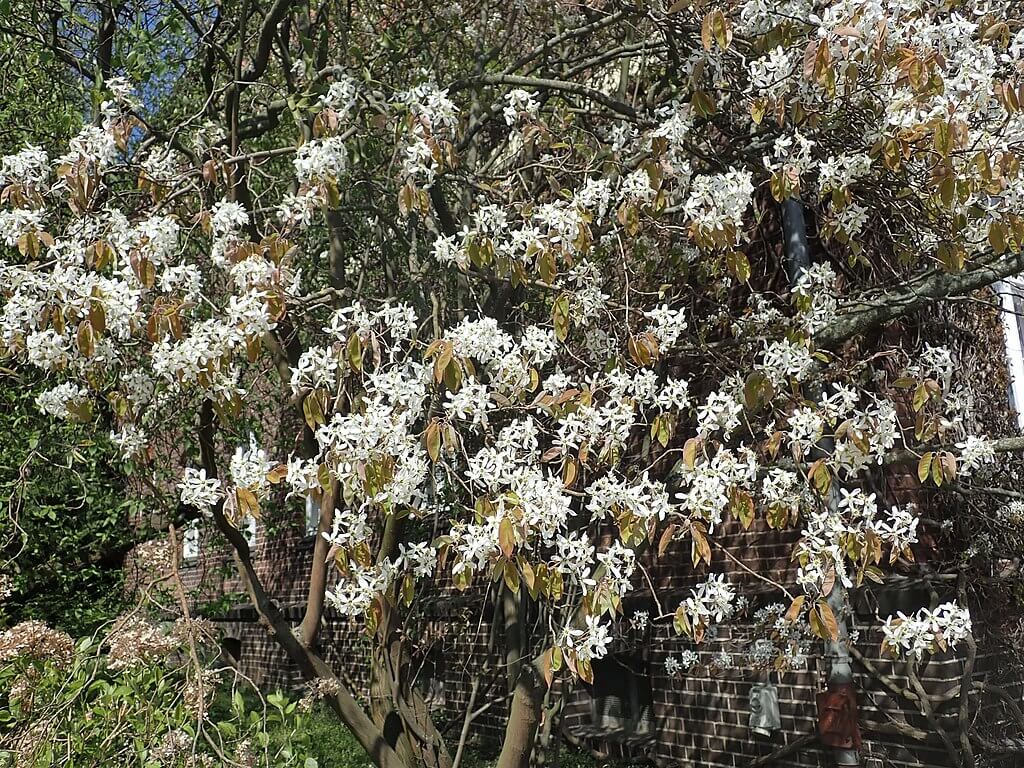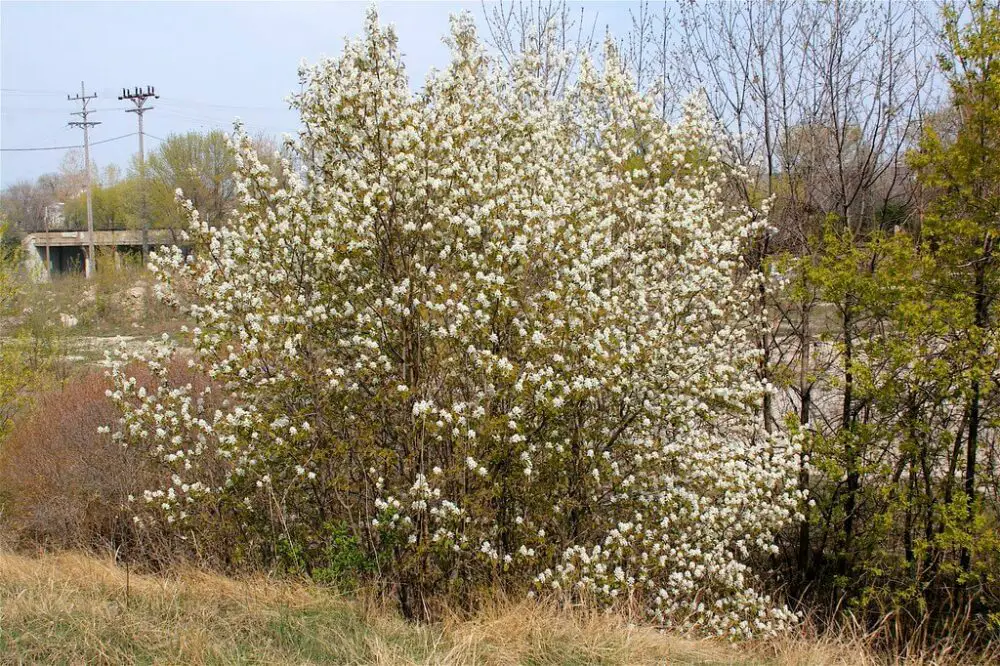A tall shrub or small tree, Amelanchier arborea can reach a height of as much as 30 feet and bears white flowers arranged in drooping racemes that appear before the leaves. The common serviceberry is found throughout eastern North America. The fruit of these plants is also edible and is similar to a blueberry.
The first settlers in New England often planned funeral services at the same time that the Amelanchier arborea bloomed.
The tree’s blooming signaled that the ground had thawed sufficiently to permit gravedigging, so it became known as the serviceberry tree.
Read on to learn what delicious things can be made from the fruit of this remarkable tree.
What Are You Foraging For Right Now?
We're thrilled to hear your ideas. What would you like to submit today? Feel free to share your thoughts and experiences with us.
Amelanchier arborea plant profile
| Scientific name | Amelanchier arborea |
| Family name | Rosaceae (rose family) |
| Plant type | Deciduous shrub |
| Kingdom | Plantae |
| Genus | Shadbush |
| Phylum | Vascular plant |
Common names include:
- Alabama serviceberry
- Common serviceberry
- Downy serviceberry
- Juneberries
- Sarvis
- Sarvis-tree
- Serviceberry
- Service-tree
- Sarvice
- Shadblow
- Shadbush
- Shadberries
Service tree identification
A tall shrub or small tree, Amelanchier can reach a height of as much as 30 feet. There are white flowers arranged in drooping racemes that appear before the leaves.
When young leaves are developing, they are covered with soft, woolly hairs that eventually disappear as they mature.
Even though this fruit is called a berry, it is actually a pome. A pome is a fruit with several small seeds surrounded by a membrane in the center of the edible flesh.
All pomes, such as serviceberries, apples, pears, and quinces, are botanical members of the Rosaceae family.
It is self-fruitful, meaning other blossoms on the same tree can pollinate the flowers.
Like apples, seeds are not true to their parentage. In most cases, stem cuttings are used for propagation.

Where does amelanchier arborea grow?
The common serviceberry is found throughout eastern North America, ranging from southern Newfoundland to the northern Florida Panhandle and west to southern Ontario and Quebec, eastern Kansas, Nebraska’s eastern edge, Minnesota’s eastern border, and southern Mississippi and Alabama. It can be found throughout South and North Carolina and in hardy hardiness zones 4 to 9.
In the short term, they grow one to two feet per year, so they are a good choice if you are looking for a tree that will not grow like crazy and take over your yard.
It is recommended that serviceberry trees receive at least four hours of direct sunlight each day. Since they can tolerate part shade, you can plant them at the edge of a woodland or in a yard with larger trees, and they will still receive adequate light.
However, they tolerate a wide range of soil types provided the soil has loam, is acidic soil, and is well-drained.


Are serviceberries edible?
The fruit of these plants is also edible. The fruit of this native plant is similar to the shape and size of blueberries, and when it ripens in June, it is dark-reddish to purplish in color.
It has a mild blueberry flavor, but inside there are soft, almond-flavored seeds.
Serviceberry is an excellent source of:
- manganese
- magnesium
- iron
- calcium
- potassium
- copper
- carotenoids
Are any part of the plant toxic?
It is dangerous to livestock that consumes large quantities of serviceberry leaves and green fruits since their digestive systems convert the cyanogenic glycosides into cyanide. Except for the ripe berries, all parts of the plant contain cyanogenic glycosides.
When wilted, the leaves are more toxic than when they are fresh. Cyanide inhibits the action of the enzyme cytochrome oxidase, thus preventing hemoglobin from releasing oxygen to the tissues. Symptoms of anoxia can lead to death very quickly.

What do you do with serviceberries?
Served fresh from the tree, serviceberries can be prepared in any way you would use blueberries, including:
- smoothies
- cobblers
- pies
- muffins
- pancakes
- jellies
- jams
- ice cream
- sorbet
- pudding
- wine
- fruit leather
- syrup
In addition to eating the fruit fresh, it can also be baked into pies or other desserts, canned, or preserved.
Foraging tips
- Picking the berry-like juneberry fruit does not harm the parent tree.
- The berries do not ripen at the same time, so expect the harvest to last for two or three weeks. The juneberries ripen between the end of spring and the beginning of summer.
- They are commonly found in mountain valleys, open prairie ravines, lakeshores, and open woodlands and often frow alongside chokecherries.
- The serviceberries continue to ripen after they have been picked. However, well-ripened purple fruit tends to become mushy and is difficult to harvest.
- It is always best to harvest the fruit in the early morning after the dew has dried and before the heat of the day softens it.
- Harvesting should be delayed until two-thirds of the fruit is ripe. Because serviceberries continue to ripen after harvesting, they should be refrigerated as soon as possible to prevent spoilage.
- The more mature fruit has a higher sugar content than the early pickings that are less ripe.
Ana has always been interested in all things nature and flora. With her expertise in home gardening and interest in foraging, she has been spending her weekends and free time looking for edible native plants, flowers, and fungi. One of her many hobbies includes testing new savory and sweet recipes, juices or teas made from freshly picked plants, wild fruits, or mushrooms.

